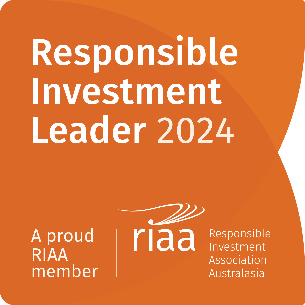A Look into Local Markets
After what has been a very good month for the Devon Funds we thought it would be useful to acknowledge how well the local market has done over recent years and indicate where we see the potential opportunities in the future.
Since the end of the GFC the New Zealand equity market has delivered extraordinary returns to investors with the S&P/NZX50 Gross Index up almost 250% in that time (over 14% p.a.). This performance has been sponsored by a range of factors including accommodative global monetary policies, a recovery in economic growth, the support of Kiwisaver, a near insatiable appetite for our high-yielding stocks by offshore investors, and in more recent times the performance of growth stocks. Given these returns, some people could be forgiven for assuming that the opportunity set in our market was exhausted. While we acknowledge the length and strength of the bull market, we believe the reality is different to this.
Stock markets in general move in cycles, and within each cycle there are stages. These stages can be considered in a range of ways including how different investment philosophies and styles perform, but they can also simply be defined by the changing nature of where investment opportunities exist. As Mark Twain allegedly said, “History doesn’t repeat itself but it often rhymes”. This is particularly relevant to the analysis of financial markets because although the world is forever changing, there is an inherent familiarity with how these cycles behave and it is from historical reference that investors can consider where the best risk adjusted returns may be found today. New Zealand is no exception to this.
When we think about what has happened to our local equity market it would be easy to assume that the rising tide had been similarly generous to all of our listed companies, but this has not been the case. This bull market has been defined by a range of factors with one of the most notable being the outperformance of “Growth” stocks over “Value” stocks. In fact UBS recently highlighted in a research report that, in their characterization of styles, “Growth” has outperformed “Value” by 12.2% per annum since early 2014. Much of this outperformance has come from investors simply paying a higher price for the earnings of these “Growth” companies. In fact the average price-to-earnings ratio (PE) for these stocks has increased from 18X in January 2014 to 26X today, a 44% lift, while the PE for “Value” stocks has remained reasonably stable. This preparedness from investors to pay and accept higher prices for certain companies at different times is what market cycles are all about, but it is from this repricing that the next stage of opportunities are born. As is the case with any asset class, whether it be property or shares, when the differential in valuations gets to meaningful levels, corrective action in one form or another typically occurs.
Over the past couple of years the influence of these pricing discrepancies across our market together with factors such as the stage of the business cycle, the healthy state of corporate balance sheets and the rapidly evolving nature of so many industries have, not unexpectedly, contributed to a resurgence in Mergers and Acquisitions (M&A). This is certainly not unique to New Zealand as globally we are also seeing very healthy levels of transactions occur. In 2017 there were over US$3.2 trillion recorded, as cashed-up private equity groups and motivated businesses looked for opportunities. This year-to-date, research firm Mergermarket, has reported that global M&A activity, in the first quarter of 2018, is at the highest level seen in 17-years! According to their report the key drivers have included corporates desiring diversification, innovation and defensive consolidation. Interestingly, although there has been a record level of deals occurring in markets such as the US, volumes in China have also been particularly strong, with M&A also occurring at a record rate with over 85% of it involving domestic players.
In New Zealand, according to figures released by law firm Chapman Tripp, total deal value last year was US$3.5bn. This was a solid year of activity albeit down from 2016 due to the election and the lack of major transactions, that in the prior year, included the purchases of Nuplex and Sistema. In 2018 though we have already seen a resurgence in deal flow. The recent takeover bid for Tegel Group by Philippines based Bounty Holdings, the purchase of Trilogy International by CITIC Capital and the acquisition of Fliway by the Yang Kee Group highlight that investors and strategic buyers are looking across our market, attracted in large part, by the appearance of value. Investment bankers are reporting record interest in public-to-private deals. Our local equity market is characterized by a range of good businesses, operating in well-functioning industries. These factors alone will attract corporate interest, but when many of these targets-of-interest have been sold down due to short-term operational challenges, the likelihood of activity increases. The number of deals occurring in our private (non-listed) markets also provide support to this thesis with transactions this year including the purchase of Macpac, Stevenson Construction Materials and Simcro.
High levels of M&A activity are often a feature of the late stages of a market cycle, and this is perhaps where we find ourselves today. Despite this possibility, history tells us that even if the bull market is nearing maturity that attractive opportunities typically still present themselves. This certainly feels like the situation in New Zealand today. The level of stock price dispersion that we have seen in recent years will ensure that both traditional investors and corporate buyers alike still have plenty to focus on.





